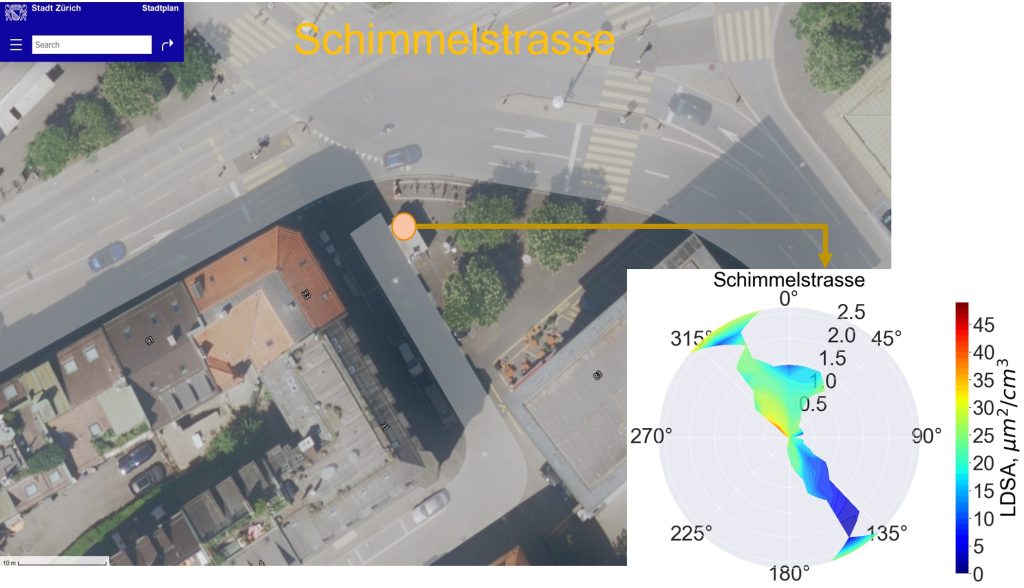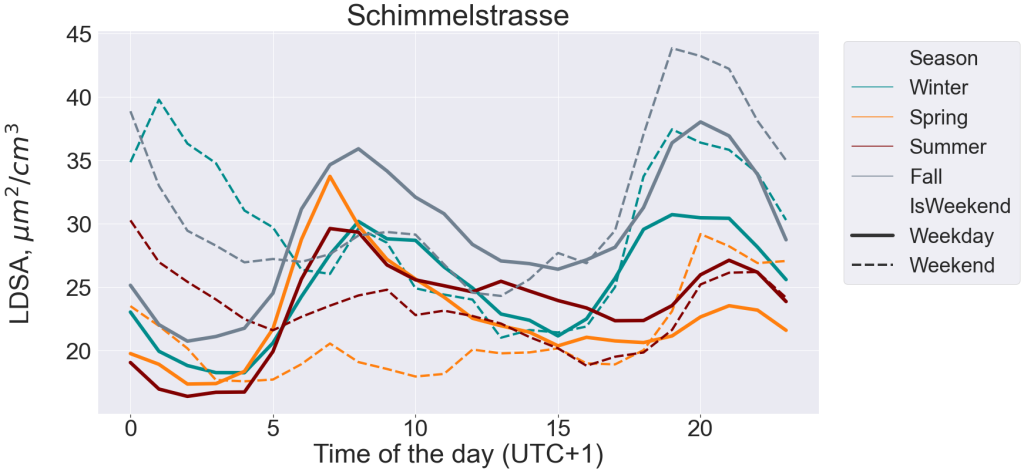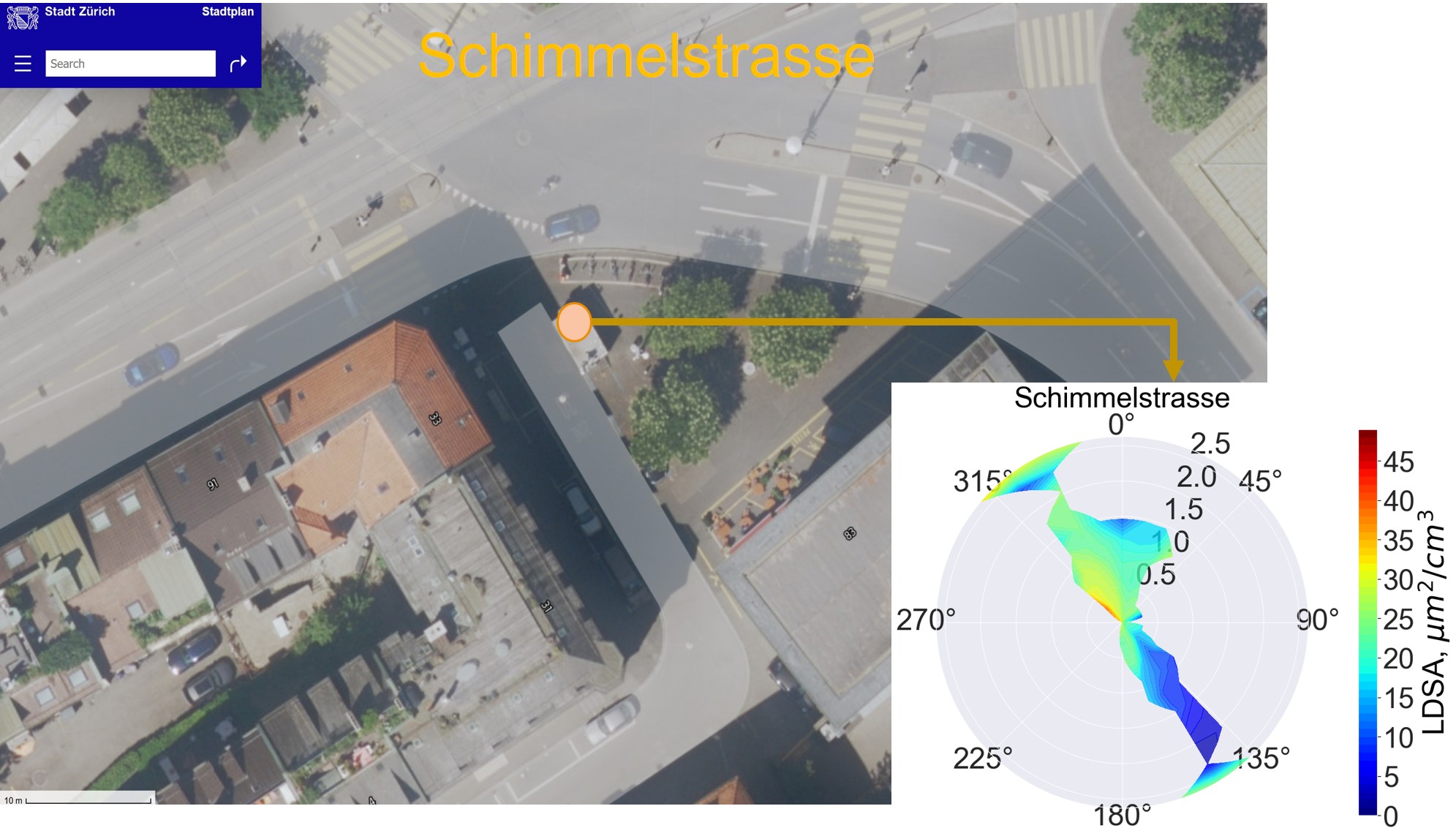Navigation menu
- Education
- Emissions & Air Quality
- Infrastructure & Services
- Meteorology & Climate
- News
- Physical Chemistry
- Projects
We introduced you to the concept of lung deposited surface area (LDSA) and our network of LDSA sensors in a previous post. The idea of monitoring very fine particulate matter (PM) comes from the knowledge that up to 90% of number concentration of ambient PM comprises of particles less than 500 nm of which ultrafine particles (UFP, diameter < 100 nm) can be up to 70% (Henning et al. 2018). However, UFPs are not regulated due to limited data and poor understanding of their distribution and driving factors.
Now, this limitation can be eliminated through a network of sensors measuring UFPs, as the ambient distribution is highly heterogenic (Cyrys et al. 2008). Standard methods for measuring UFPs are by particle number concentrations and size distribution measurements. The cost of one particle counter can be very high, not including the cost of daily to weekly maintenance required. A network with such counters will be very demanding. New methods are needed, hence LDSA. The LDSA sensors in the previous post were designed to eliminate this cost limitation from PM monitoring in a network, in addition to providing data on a PM metric that is closely related to the health impacts of PM.
LDSA is a metric that measures the surface area concentration of particles that get deposited in the lungs. LDSA is an important metric as particle surface area has been identified as very important for acute toxicity of nanoparticles (Schmid and Stoeger. 2016). LDSA could be measured for the tracheo-bronchial region (tracheo-bronchial LDSA) or the alveolar region (alveolar LDSA). The alveolar region has been tagged very important because particles in this region are very small and get direct access to the bloodstream. Also, particles trapped in the alveolar region can take up to 700 days to be cleared out of the lungs (Oberdörster et al. 2005). So, most LDSA measurements, like ours, target alveolar LDSA.
Over a period of more than one year, we measured the LDSA concentration in the region of Zurich with a network of 10 prototype sensors developed by naneos particle solution, gmbh. Below are some of our observations of LDSA at Schimmelstrasse, Zürich.
- LDSA and wind
Depending on the wind direction and speed, particles can be transported from different sources. At low wind speed, the local sources dominate, but at high wind speeds, the local concentrations can become diluted or pollution can be transported from farther polluting sources. Wind speeds at the Schimmelstrasse station are low due to shielding from buildings around this station; hence, local pollution sources (parking lot, restaurants close to the station and the busy road) are the dominant sources of PM measured.

- Temporal patterns in LDSA
LDSA reflects the temporal pattern of the main pollution source. In the morning, it is common to measure the morning rush-hour especially close to roads. In the evening, the traffic rush-hour is diluted due higher atmospheric boundary layer. Close to urban areas, though, a late evening increase in LDSA can occur with increase in residential and social activities (night-time socials appear to begin on Thursday evenings in Zurich, Figure 2). Sundays are generally much slower in Zurich; one can observe the very low LDSA during the day on Sundays (Figure 2, at Schimmelstrasse). One can also see the effects of cooler temperatures, with higher concentrations, especially in the evening and weekends, in the winter and fall (at Schimmelstrasse, Figure 3). Higher concentrations in the cooler months are probably due to heating and lower and stable atmospheric boundary layer, reducing atmospheric dilution.


